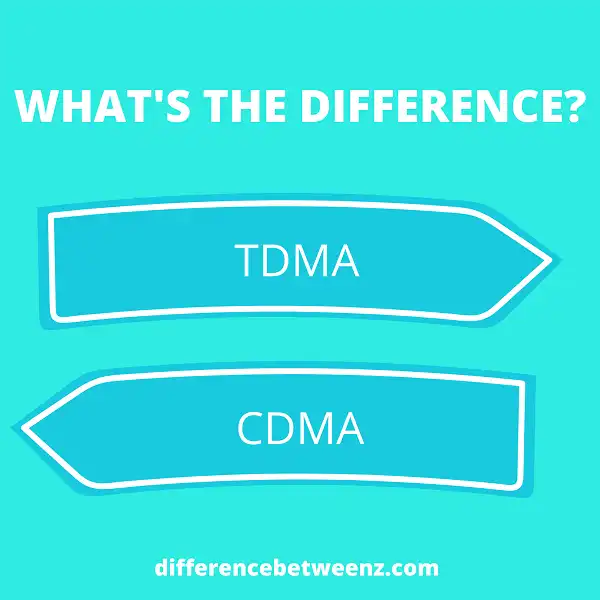There are many different types of cell phone networks, but two of the most common are TDMA and CDMA. These networks use different technologies, which can cause confusion for consumers. In this blog post, we will outline the key differences between TDMA and CDMA networks. We will also discuss how each network works and what benefits they offer consumers.
What is TDMA?
- TDMA (Time-Division Multiple Access) is a digital communication method that allows multiple users to share the same physical channel by dividing the signal into time intervals.
- TDMA can be used in both frequency-division multiplexing (FDM) and time-division multiplexing (TDM) systems. In TDMA, each user is assigned a specific time slot within the overall frame structure. This allows each user to transmit for a short period of time, without interfering with other users.
- TDMA is commonly used in cellular networks, where it provides each user with a dedicated time slot on the downlink and uplink. This allows TDMA to support a higher number of users than other multiple access methods, such as code-division multiple access (CDMA). TDMA is also used in satellite communication systems and local area networks (LANs).
What is CDMA?
- CDMA (Code-Division Multiple Access) is a channel access method used by various radio communication technologies. CDMA is an alternative to Time Division Multiple Access (TDMA) and Frequency Division Multiple Access (FDMA). CDMA does not assign a specific frequency to each user; instead, it assigns a code.
- CDMA allows multiple users to share the same physical channel. CDMA is used in Ultra Mobile Broadband (UMB), 3GPP Long Term Evolution (LTE), CDMA2000, and other wireless communication systems. CDMA2000 is the most widely used CDMA system. CDMA2000 is a 3G mobile technology that uses CDMA principles.
- It supports data rates of up to 2 Mbps. CDMA2000 is an evolution of cdmaOne, which was developed by Qualcomm. CDMA2000 1xRTT is the most common form of CDMA2000; it has been deployed in over 80 countries. LTE-Advanced is the next generation of LTE, and it uses CDMA as one of its multiple access schemes. LTE-Advanced supports data rates of up to 1 Gbps.
Difference between TDMA and CDMA
TDMA and CDMA are two different methods for coding signals in order to transmit them over a shared medium. TDMA, or Time Division Multiple Access, encodes each signal by dividing it into time slots. This allows multiple signals to be transmitted simultaneously over the same channel. CDMA, or Code Division Multiple Access, encodes each signal using a unique code. This code is then combined with the signal before it is transmitted. As a result, multiple signals can be transmitted simultaneously, but they will not interfere with each other. TDMA is typically used in digital cellular systems, while CDMA is used in satellite communication systems.
Conclusion
CDMA and TDMA are two different digital communication standards. They both have their own unique benefits, but which one is the best for your business? To answer that question, you need to consider what your needs are. If you need a network that can handle large amounts of traffic or if you need high-quality voice calls, then CDMA might be the better option for you. If you’re looking for a more cost-effective option with faster data speeds, then TDMA could be the way to go.


